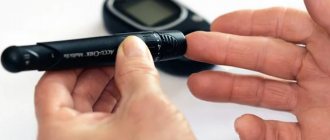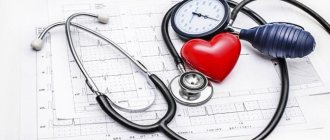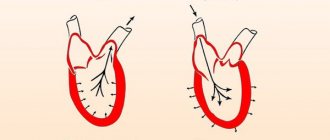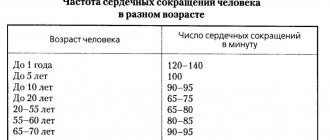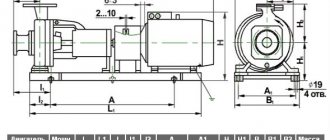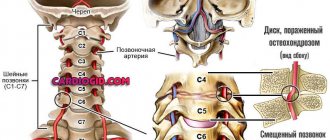Devices that non-invasively measure blood pressure (BP) - tonometers, also known as sphygmomanometers - often require periodic testing and calibration. A newly purchased product is usually already adjusted and ready for use, giving accurate readings, but over time, with frequent use, deviations occur. In this article you will learn how to set up blood pressure monitors. Let's look at how to find out if a sphygmomanometer is accurate, how to calibrate and adjust it, prepare it for work, and eliminate errors.
The need to check the tonometer for accuracy
When using a tonometer, it is important to be able to maintain it, know how to identify errors and adjust it. As standard, new out of the box, the blood pressure meter is already calibrated and ready for use after unpacking without any manipulation.
Although less common, there are devices that need to be adjusted before use, for example, if the product was stored in a warehouse for a long time, experienced factors that reduce accuracy (temperature changes, etc.) or initially had deviations.
But basically, checking the tonometer and monitoring the correctness of the measurements is required after a certain period of using the device, and also even if it was used only a few times, after which it was stored idle. If the device is electronic, then over time faults appear in its circuits, and the mechanical parts also “get tired”. Such phenomena are natural and do not mean a breakdown.
Checking and calibrating the tonometer will also be required after its repair.
To which institutions can blood pressure monitors be taken for testing?
A tonometer is a measuring device and, like all such devices, requires special maintenance. Official, with written confirmation, inspections, verifications, adjustment procedures, calibration are carried out by specialized institutions accredited by the state (the list is on the Rosstandart website) for the maintenance of measuring instruments, or standardization and metrology centers (TSMS). The listed enterprises are contacted when it is necessary to check a large number of products, when an official conclusion is required, a guarantee of their serviceability, confirmation of maintenance, for example, for equipment in clinics and medical institutions.
But any user can also contact special SM enterprises; the services are not always free, although they often hold promotions for the population without charging a fee. Nevertheless, methods of how to check the accuracy of a tonometer with your own hands at home remain always relevant: such a procedure can be carried out without wasting effort or time visiting institutions.
So, adjustment and accuracy analysis can be carried out independently or in any institutions that have special testing equipment (services, clinics, large pharmacies).
Types of tonometer
The types of blood pressure meters are:
| View | Description, features |
| Mechanical, also known as aneroid, manual | You can check the correctness of the indicators in the same ways as for all types of such devices. Inside the mechanics, similar to a pressure gauge: a spring part or bellows (usually) connected to a pointer on the scale. Mechanical devices are extremely rarely calibrated and break down, much less often than electronic versions; they work for decades without problems due to the thoroughness and simplicity of their design. These are more repairable products. In addition to the above, their adjustment is extremely simple - with an adjusting bolt near the bellows. |
| Mercury based on mechanical processes: the pressure arising in the cuff presses on a column of mercury in a flask on a graduated jackal. These types of blood pressure meters are used less frequently. | |
| Electronic (automatic) | They have an oscillometric electronic measuring system. Inside there is a special sensor with a measuring chamber that reacts to air pressure. If this camera is broken and deviations occur because of this, then it can be repaired. You can also buy a similar element from service companies and replace it yourself by removing the cover of the tonometer and inserting a new one into its seat instead of the old part. |
| Semi-automatic (electronic-mechanical). These are the same electronic devices, but the cuff must be inflated manually using a bulb. |
There are advanced devices with voice messages on the market:
Which type of tonometer is more accurate, permissible errors
It is impossible to determine with complete certainty the most accurate type of tonometer. There are an equal number of opinions on this matter on the Internet. And also before considering the question of how to check the accuracy of tonometers, it is important to remember that they all have permissible errors.
The question of what is more accurate is not particularly relevant, since there are no prerequisites for considering the sensor of an electronic sphygmomanometer less accurate than a product with mechanics, and vice versa.
There is also an opinion that the mechanical information shown by a pointer in the form of a metal/plastic stick on a scale is better perceived by vision and the brain than numbers on a liquid crystal display. But on the other hand, a small thin arrow is more unstable, and you also need to track clicks and vibrations, so the accuracy of perception decreases. The numbers on the display encourage more efficient data tracking. That is, the user himself must decide what is more convenient for him.
But the fact is undeniable that using electronic automatic blood pressure meters is much easier; for elderly people, with poor vision and hearing, this is an excellent choice.
Errors in sphygmomanometers are also acceptable due to improper use
For each tonometer, its instructions specify the permissible limits of deviations. As a standard, all sphygmomanometers can give the following maximum normal errors:
- ±3 mmHg Art. by pressure;
- ±5 according to pulse.
Regarding deviations, it is more important to pay attention to the correct use of the product, to the correct application of the cuff, and especially to the absence of interference. For example, movements of the hands, body, talking, coughing, knocking on a chair, vibrations can provoke deviations. In almost all cases, even if all influencing factors are minimized, the scatter of the values of several measurements, although minimal, will always be there.
To minimize the discrepancy in readings, it is recommended to take a break between measurements of 5–10 minutes. with the removal of the cuff, which will restore blood supply and elasticity of blood vessels, preparing them for the next manipulation. It should also be taken into account that the values will differ at different positions of the inflatable pad, the level of its tightness, and the density of coverage. This factor is always present: it is impossible to position the cuff completely identical to the previous application - larger or smaller, but there will always be deviations.
When a correctly configured device measures with errors
If the user uses the device incorrectly, he may have the mistaken opinion that the accuracy of the tonometer has been compromised, malfunctions have occurred, or incorrect operation.
That is, in such cases, the device is properly configured and in working order, but due to non-compliance with operating rules, it produces results with errors.
Application standards may differ for each specific model, so you should read the instructions. Let us describe the standard rules characteristic of most blood pressure meters.
Rules for putting on the cuff:
- 2 cm above the elbow. If it is more, then there may be a deviation from real values in the direction of their increase; lower - to decrease;
- the cuff should not put too much pressure on the arm, or, conversely, sag. If the pad is too narrow, for example, when a person has a large hand, then such a device will not fit; you need to buy it with an increased size. This item is sold separately;
- in tonometers, where air is pumped manually, it is released as slowly as possible within reasonable limits. It is important to achieve stable bleeding so that there are no jerks.
You should also consider the following tips:
- if blood pressure needs to be determined for a person’s normal state, when he is not affected by any stimulating/depressing factors, then it is important to carry out the procedure in their absence. For example, when alcohol, caffeine, tinin, tobacco, etc. were not consumed. Of course, there are situations when it is necessary to analyze indicators specifically under stress, fear, excitement - then this condition is insignificant. It should be taken into account that the listed products and conditions can provoke sudden surges in pressure for short periods, and random changes are also possible. Therefore, it is recommended to take measurements several times at certain intervals;
- If the electronic tonometer has batteries (not powered directly from the mains), then you need to check their charge.
Statistics from service centers indicate that a noticeably large number of requests regarding incorrect indicators are associated precisely with the incorrect use of the tonometer. So, if the device displays inadequate numbers and is used according to the instructions, taking into account factors affecting a person’s blood pressure, then it needs to be checked.
How to determine pressure without a special device
Read on and find out how to measure blood pressure if you don’t have an automatic medical device at hand. The methods described below for measuring blood pressure using improvised means will help you out every day, helping you avoid critical situations. After studying each one, you can choose the most convenient one. Take into account the recommendations of specialists to be able to record changes in blood pressure levels and take appropriate medications in a timely manner.
The question of which hand to measure pressure on is worthy of special attention. Many people think that there is no difference, but this opinion is wrong. Modern medicine claims that even the slightest difference in blood pressure levels on the left and right arm may indicate that a person is at risk of developing serious diseases associated with blood vessels. A difference of several units can lead to irreparable consequences. Regardless of which way you prefer to measure blood pressure, you should always check both hands.
By pulse
A simple and yet effective technique that has become widespread throughout the world. If you know how to measure blood pressure using your pulse, you won’t need any special medical devices at all. The main thing is to learn how to correctly time and correctly perform basic mathematical calculations. So, let's find out how to measure blood pressure without a tonometer, using your pulse as a guide.
- Take a comfortable position on a chair at the table.
- Place a mechanical or electronic wristwatch next to you.
- Imagine something pleasant for 2-3 minutes to calm your nervous system.
- Gently place the fingers of your left hand on your right wrist. Make sure that the cuffs of clothing do not pinch the blood vessels.
- Count the number of beats in a 30-second time interval.
- Multiply the result by two to get the number of beats per minute.
A value of 60 indicates that blood pressure is low. Normal values lie within the range of 60-80 beats per minute. If, as a result of calculating the pulse, the result is a value exceeding 80, it means that the pressure is increased. To cast aside doubts about the correctness of the measurements, perform the algorithm of actions again.
Using thread, ruler and pendulum
It will be useful for people who have difficulty feeling the pulse in their hand to know how to measure pressure without a device, using an ordinary ruler, sewing thread and a metal pendulum. The role of the latter can be played by a gold/silver ring, a tailor's needle or an ordinary metal nut. If this is relevant to you, then write down how to measure blood pressure without a tonometer.
- Attach a ruler 20-25 cm long (no more) to your hand, from the wrist to the inside of the elbow. The zero should be on the hand side.
- On a thin sewing thread 50-60 cm long, place the item you have chosen as a beacon. Take the thread by the edges. A manual pressure gauge for measuring blood pressure at home is ready.
- Slowly bring the beacon suspended on a thread to the ruler and move it along the scale from zero towards the extreme mark. The closer the load is to the ruler, the more accurate the blood pressure measurement result will be.
- When the beacon moves a few centimeters, you will notice that it begins to oscillate from left to right. Note the mark on the scale and multiply its value by 10. This is your lower blood pressure reading.
- We continue measuring blood pressure. Continue the thread. The second time the beacon will begin to fluctuate at the upper blood pressure level.
If you do not fully understand how to find out your blood pressure without a tonometer, watch this video. The video clearly demonstrates the correct procedure for performing actions when measuring blood pressure using improvised means. Qualified specialists will explain how to measure blood pressure correctly. Follow these tips to avoid common mistakes.
Checking with pressure simulators
In large central hospitals, pharmacies, service centers for medical equipment and specialized stores there are special devices that simulate pressure for setting sphygmomanometers. Services with such devices can be used in most cases for a small price, and often completely free. From time to time, institutions organize events during which inspections are offered without payment.
Not all of the listed points have the described testing equipment, so the user will have to specifically inquire about the availability of a service for servicing blood pressure meters. But it should be noted that equipment should always be available in large medical government institutions and service points for medical equipment.
The operation of the testing pressure simulator is based on its detection of discrepancies between the tonometer being tested according to the specified parameters and the reference, real indicators. This is the most reliable way to analyze blood pressure meters.
The user does not always have a desire to learn about testing equipment or does not have the opportunity to pay a visit to the organization providing the service, therefore methods of how to check the tonometer for accuracy and analyze the correct operation of the device at home are also required.
How to determine blood pressure without a tonometer - best methods
The question of how to determine pressure without a tonometer is relevant for those who do not have a special device at hand, and the symptoms of the body are very alarming. It is necessary to know information about blood pressure in order to take the necessary measures in time. Indeed, with different indicators, first aid differs significantly. Without a tonometer, it is impossible to determine the exact values of upper and lower pressure, but you can find out whether it has decreased or increased. After all, before the invention of this device, people also knew about pathologies of this kind and diagnosed them using other methods.
- Determination of blood pressure by pulse
- Localization of headache
- Diagnosis by symptoms
- Measuring method with ruler and pendulum
Connect two blood pressure monitors to one cuff and compare readings
You will need 2 sphygmomanometers (borrow from neighbors, etc.), one of which, properly calibrated, will be the standard. The devices are connected alternately to one cuff and the indicators are compared. If the readings of the device compared with the control device differ, then it requires adjustment. In this way, even the smallest errors can be identified.
Parallel connection
This method is an improved and more convenient modification of the previous one. This method can be used for most models - for those with separate pads connected by a tube to the meter body. You will need a homemade adapter or a splitter from a dropper to connect two tubes through it to one cuff hose.
That is, in this case, the sphygmomanometers are combined with a splitter (as in the photo above). Small tubes are connected to them from its side outlets, and the lining hose is attached to the central spout of the adapter. The algorithm is simple: tonometers are connected, measurements are taken, and the readings of two devices are compared online simultaneously.
The advantage of testing a tonometer at home by connecting two devices in parallel is that it becomes possible to observe the spread of values displayed by two products simultaneously. The disadvantage of this procedure, like the previous one, is that it is impossible for models with an integrated cuff (as in the photo below), immediately in their composition, which cannot be separated.
These are often electronic compact sphygmomanometers; the pad in them is put on the hand immediately along with the body.
The splitter (adapter) can be taken from a dropper, from aquarium compressors, or glued together from the bodies of ballpoint pens. The tubes can be taken from the specified equipment, and instead of them you can even use rubber winding from unusable power cords of household appliances, extension cords, removing the wiring from them.
How to check a blood pressure monitor at home
The version with a reference tonometer is also suitable for home use. If you or someone you know has another device that you are confident is accurate, use it for comparison. It will help to identify not only gross deviations from the norm, but also small errors.
Some people, especially older people with extensive experience in measuring blood pressure, often believe that mechanical tonometers are better and more accurate. However, this is not the case, because modern electronic devices do their job very well. The parallel measurement method (using another tonometer) makes it possible to evaluate the quality of each device.
To avoid mistakes, you need to follow certain instructions:
- The instruments are connected in parallel so that measurements occur simultaneously.
- Several test measurements are carried out to obtain an objective assessment.
- If necessary, individual elements of each device are checked.
The design of a simple mechanical tonometer consists of a bulb, a pressure gauge and a shoulder cuff. They are connected together into a single system, the pressure in which is always the same. The mechanical device can be used as a reference for parallel measurements.
You need to do this as follows:
- The pear is unscrewed.
- An electronic tonometer is connected to the tube through a special adapter.
- The procedure for pressurizing and further measurement is started.
There is no particular difficulty in this, you only need an adapter. The design of the medical device allows you to easily unscrew individual elements without any complications.
This option is interesting because information is obtained in two ways at once:
- On the screen of an electronic device.
- Using a regular phonendoscope.
A fairly experienced person is able to count the pulse rate by ear, so he sees deviations and errors in the indicators of an electronic device.
Remember that the permissible error is no more than 3 mmHg. Deviations greater than this value no longer correspond to the norm, so calibration of the device is required.
If there are deviations, check the correct connection of all elements, the reliability and uniformity of fixation of the cuff. If this does not help, then contact the service center for an accurate check and adjustment of the tonometers. You should not use a device that gives incorrect readings, even if the deviations are not too significant at first glance.
Calibration of the electronic blood pressure monitor
Let's look at how to set up a tonometer and its adjustment using the Microlife BP A50 product as an example. The first stage is to unscrew the bolts of the cover and remove it:
The procedure is similar for all models with a similar measuring chamber as in the hand of the master in the photo below (the majority of them are the same, the element is the same, this is the standard, only the standard sizes and mounting differ):
Every electronic device has a regulator inside (some have a selector outside, but such models are rare). This element is also as similar as possible for different models. It is a simple trimmer with a small plastic selector, often with a cutout for a flathead screwdriver.
You will need a head from a mechanical tonometer:
In our case, the model is semi-automatic, so the pear is included. You will also need a tee. Here the master made it from scrap materials. You can take hollow ballpoint pen bodies and glue them with silicone or other glue.
We connect the tubes as in the photo below:
The cuff is placed on a plastic bottle of water to create some kind of load:
Take out the batteries, press the off/on button, hold it down and, holding it like that, insert the battery:
The button is pressed (that is, it must be held down when inserting the battery), the automatic tonometer switches to the calibration mode, which may be accompanied by a sound signal, the readings are automatically set to 0 (the device has been calibrated to zero).
We inflate the bulb, clamp its valve, and slowly release the air:
We compare the indicators of the mechanical head (here it acts as a controller), in this case it is necessary to clamp the hose so that there is no bleeding, to stabilize the indicators. In our case, there is a spread: on the control panel 210, on the scoreboard 206, with further bleeding the discrepancy is 180/177, and so on. The discrepancy is nonlinear, since up to 100 the electrotonometer is calibrated normally, that is, after 100 the values level out, but this is insignificant and does not reduce the need for adjustment.
We turn off the device and experimentally, by moving the regulator (remember, this is an ordinary variable resistor, not the sensor/pressure chamber itself), we find the correct value. You can turn it in any direction, but you need to remember how much you moved the selector. Then we perform the manipulation described above: turn it on, look at the magnitude of the discrepancy.
The specified calibration is carried out until the indicators of the controller and the indicators on the scoreboard coincide as much as possible. That is, through experimentation, at random, trial and error. But if you remember how much you turned the selector, then you can achieve the desired result after 3-4 cycles of such manipulations. Before each, you need to reduce the pressure to 0, bleed the air from the cuff completely.
Correct pressure measurement
To measure blood pressure, you need to put a special cuff on your arm. It should be 1-2 centimeters above the inner bend of the elbow. The cuff must fit the person in size. It shouldn’t put too much pressure on your hand, but it shouldn’t “hang” on it either. After this, the air is pumped with a special rubber bulb, independently or with outside help. After this, the pressure will be known.
Avoiding errors in readings when measuring pressure
Sometimes the tonometer can give incorrect data, so you should always monitor its accuracy. First of all, you need to know that there are several types of devices:
- Mechanical tonometer. It is more difficult for them to measure pressure - this should be done by a doctor or a person with very good vision and hearing, who can accurately recognize the pulse in the headphones and the desired indicator on the dial.
- Electronic or automatic blood pressure monitor. This is a modern device that everyone can use - you just need to use it correctly and it will display the pressure on the screen.
It is impossible to say which of these devices is more accurate. If used correctly, they will both show the correct indicator. But in both cases errors are possible. An electronic device will most likely malfunction if the battery charge is low. It is also impossible to obtain the correct result if the bulb, electronic unit or cuff is faulty. Calibration of the mechanical apparatus is also necessary. To avoid mistakes, before measuring blood pressure, you should refrain from drinking alcohol, coffee and strong tea, smoking, and physical activity. You cannot talk or take your pulse when you are nervous. To obtain accurate readings, it is better to measure your pulse in the morning and evening three times, with breaks of 5-10 minutes. The lowest number will be the most accurate.
Calibration of a mechanical tonometer
If errors appear in mechanical sphygmomanometers, this is always associated with a springy corrugated shell - a bellows, to which the arrow with a holder is attached. The mechanism is adjustable.
Calibration is extremely simple:
- connect a correctly adjusted tonometer and the device requiring adjustment in parallel to one cuff (the best option) or alternately;
- Then the calibration itself is simple: adjust the spring with pliers and pliers using the adjusting bolt, which is located at the base of the cylinder with the bellows (the lower part near the segment with the scale). The design always provides for this possibility.
